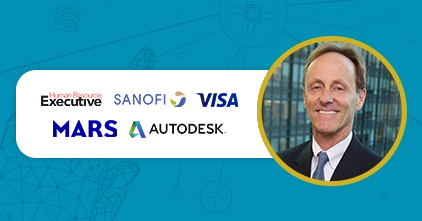
Not all of us want to be told what to do and how to do it. The same goes for workplace training. Learn more about why self-directed learning accelerates your L&D:
In the modern working environment, employees — who’ve probably spent most of their time attending classroom lectures before working in your organization — tend to hate traditional classroom set-ups for corporate training. And as adults, it’s also normal that we sometimes get annoyed when we’re told what activity to do or how to do it. The same thing happens in corporate training.
It’s a fact that not all employees thrive in a traditional instructor-led training (ILT) set-up, which often has the tendency to become interesting and irrelevant for the learner. This is why L&D trends like self-directed learning (SDL) are emerging. This involves adults taking initiative of their learning, at their own pace. Here, they get to discover their individual learning needs and goals.
And making things easier is the rise of digitalization. Through eLearning, learners can now consume resources anytime and anywhere on their mobile phones. With this, self-directed learning is made possible and hassle-free for learners.
In fact, over 40% of Millennials and Gen Z-ers, and 33% of Boomers in the workplace want a self-directed learning experience. That’s why more and more organizations are increasing their budget for workplace training and investing in eLearning platforms. But you may be wondering — why do employees want to be independent in their own learning? Here, we give you some reasons why:

Learning Flexibility
Self-directed learning offers flexibility. With SDL, you can learn and develop at your own pace whenever and wherever you are by using technology such as eLearning platforms which are now accessible through mobile devices.
Giving employees a space for flexible learning can help them improve their employee experience. By letting learners steer into the direction they need, they learn at their own pace and also realize that learning isn’t a mandatory thing, but a vital part of their lives both as professionals and as individuals.
Letting them do self-directed learning combined with an efficient and accessible eLearning platform allows them to learn during the most convenient time for them instead of the traditional learning set-up which already has allotted and limited time slots.
SDL can boost their interest more in learning and upskilling because they know that learning isn’t a rigid thing, but one that is flexible. They also know that they can still learn whatever skills they think they need.
Learner Ownership and Responsibility
As people mature, they become increasingly self-directed in how they acquire skills and knowledge. Also, adults are known to want to have ownership of whatever they do — from their 9 to 5 jobs to their own personal activities. Employees want a training program that is more learner-centered rather than company-mandated.
There’s this concept that goes, the more you’re told to do something, the less you become interested in doing it. One of the probable reasons behind this is because it’s part of human nature to crave freedom. We don’t always want to be told how to run our lives. This is why employees are optimistic when it comes to SDL because it’s a way for them to take ownership of their own learning journeys.
Another reason is that SDL involves transferring the responsibility of training and learning to the employees. This just means that that they can select what lessons to take depending on their current needs and goals.
Despite SDL being self-paced, L&D leaders can still act as moderators and guide employees in their learning. For example, HR can suggest industry-specific language lesson content to its employees. This can be done for the sake of practicality or if learners to study a particular lesson that is vital to their industry and job functions.

Greater Relevance to the Learner
eLearning makes SDL more effective through content curation which is now possible through artificial intelligence (AI) that suggests resources based on the learner’s needs and goals.
With SDL coupled with content curation, the process of learning is more relevant to learners more than ever. Giving the learners the freedom to choose topics, activities, and subjects to work on, you can easily boost the relevance of training to them.
We’re already in the era of personalization, customization, and content curation. And by increasing the relevance of every lesson to the employee, you can see to it that there will be an increase in one’s engagement in your organization which also translates to increased productivity.
Culture of Continuous Learning
Promoting self-directed learning in your workplace cultivates a culture of continuous learning. Unlike traditional training programs with specific curricula and coursework provided, SDL gives learners the freedom to choose their own learning path.
Employees are most likely to stay in the company if they get to learn and develop their skills. One misconception when it comes to self-directed learning is that it’s always an individual activity. But the truth is that it can also be done in groups through sharing resources, learning experiences, and takeaways. This promotes a culture of collaboration and learning in your workplace. This way, learning never stops because there’s no final lesson. There’s no finish line.

Empower Employees through Self-Directed Learning
Start empowering your employees by letting them take the helm of their own learning. Providing them with an eLearning platform where they can have their own training paths can help them learn based on their immediate needs and goals. This will help your organization have an internal pool of talents where all your employees are empowered and ready to work in an organization that is conducive for learning and progress. Start now!



